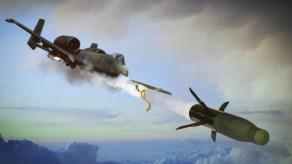According to official statistics from russia, industrial production grew by 4.4% in the first three quarters of 2024, which likely includes outputs from the russian military-industrial complex.
Assessing the performance of the russian defense industry through indirect data from statistical indicators for the first three quarters of 2024 is the subject of a new publication by the American analytical institution, the Jamestown Foundation.
Read more: Satellite Reveals russia’s R-30 Bulava Nuclear Missile Preparation from Space

Defense Express emphasizes that this publication demonstrates why relying on large-scale numbers alone to assess the state of the russian MIC (Military-Industrial Complex) can be misleading and underscores the need to draw specific conclusions and develop solutions.
We note that as of early 2024, russia’s MIC employed around 3.5 million people, out of a total industrial workforce of about 10 million (data as of 2023). This highlights the significant role the MIC plays in russia’s overall industrial production.
The Jamestown Foundation report provides the following insights. Compared to the same period in 2023, russian industry showed increases in production in sectors likely linked to military production: chemical materials rose by 3.8%, computers and electronics by 32.6%, finished metal products by 32%, and other transportation equipment by 27.3%. However, these figures are described as not demonstrating significant growth in actual weapons production.

Production data for materials crucial to ammunition manufacturing shows some anomalies: cellulose production fell by 0.1 million tons, ammonium nitrate rose by 0.5 million tons, and aluminum powder dropped by 8.6%. These figures don’t necessarily correlate with actual ammunition output.

Interestingly, russian official statistics report a rise in semiconductor production to 37.2 million units (up from 35.4 million in the first three quarters of 2023), and a 3.2% increase in electricity generation. Additionally, rail transport for industrial raw materials increased by 1.1 million tons compared to the same period in 2023. Yet, these figures are presented as not indicating significant growth in russia’s weapons production.
In our view, growth rates rather than just base numbers should be analyzed. If russia, as an aggressor state, is indeed attempting to ramp up military production, Ukraine will need additional resource support from Western partners to enhance its own defense manufacturing capabilities.
Read more: russian Army's Biggest Truck Supplier, KamAZ, Declared Multi-Million Financial Losses














